Themed collection Metal-organic frameworks and their applications

Recent progress of MOF-derived porous carbon materials for microwave absorption
MOF-derived PC materials with unique characteristic have been widely concerned as microwave absorbers over the years.

RSC Adv., 2021,11, 16572-16591
https://doi.org/10.1039/D1RA01880A
Post-synthetic ion-exchange process in nanoporous metal–organic frameworks; an effective way for modulating their structures and properties
In this review paper, we considered all of the reports on the ion-exchange process which occur in the pores of MOFs. A comparison between MOFs before and after-exchange process and their applications were addressed.
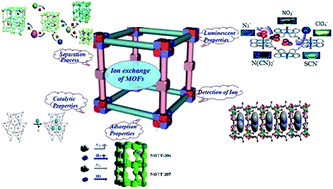
RSC Adv., 2017,7, 1782-1808
https://doi.org/10.1039/C6RA24958B
Amine-functionalized metal–organic frameworks: structure, synthesis and applications
We present a review on some recent studies on the syntheses, structures and properties of amine-functionalized MOFs, and highlight the benefits of amino functionality towards potential applications in CO2 capture, membranes and catalysis.

RSC Adv., 2016,6, 32598-32614
https://doi.org/10.1039/C6RA01536K
Methodologies for evaluation of metal–organic frameworks in separation applications
The separation performance of fixed-bed adsorbers is governed by a number of factors that include (a) adsorption selectivity, (b) uptake capacity, and (c) intra-crystalline diffusion limitations.
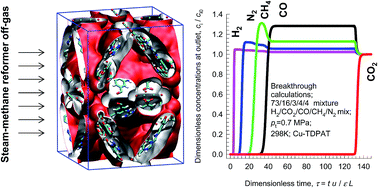
RSC Adv., 2015,5, 52269-52295
https://doi.org/10.1039/C5RA07830J
Photocatalytic degradation of methylene blue in ZIF-8
ZIF-8 was used to perform photocatalytic degradation of methylene blue, a typical organic dye.
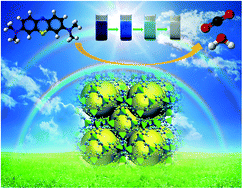
RSC Adv., 2014,4, 54454-54462
https://doi.org/10.1039/C4RA08820D
Ni(salphen)-based metal–organic framework for the synthesis of cyclic carbonates by cycloaddition of CO2 to epoxides
The Ni(salphen)-based microporous MOF represents an efficient and recyclable catalyst for the cycloaddition of CO2 to epoxides.

RSC Adv., 2013,3, 2167-2170
https://doi.org/10.1039/C2RA22550F
3D printed MOF-based mixed matrix thin-film composite membranes
An electrospray 3D printing approach for fabricating thin-film composite mixed-matrix membranes (TFC MMM) with a thickness of 2–3 μm.

RSC Adv., 2021,11, 25658-25663
https://doi.org/10.1039/D1RA03124D
Chemisorption of hydrogen sulfide over copper-based metal–organic frameworks: methanol and UV-assisted regeneration
H2S adsorption and regeneration of Cu-based MOFs.
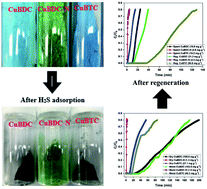
RSC Adv., 2021,11, 4890-4900
https://doi.org/10.1039/D0RA09017D
Adsorptive, kinetics and regeneration studies of fluoride removal from water using zirconium-based metal organic frameworks
A facile solvothermal method is used to prepare octahedral MOF-801 with a lattice spacing of 0.304 nm representative of ZrO2 (011) planes for water defluorination.

RSC Adv., 2020,10, 18740-18752
https://doi.org/10.1039/D0RA01268H
Enhanced dispersibility of metal–organic frameworks (MOFs) in the organic phase via surface modification for TFN nanofiltration membrane preparation
The nanosized UiO-66-NH2 metal–organic framework (MOF) material was synthesized and modified by palmitoyl chloride to enhance the dispersibility and restrain the aggregation of MOF particles in the organic phase.
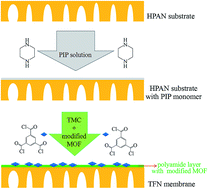
RSC Adv., 2020,10, 4045-4057
https://doi.org/10.1039/C9RA09672H
Aqueous-phase detection of antibiotics and nitroaromatic explosives by an alkali-resistant Zn-MOF directed by an ionic liquid
An alkali-resistant 3D anionic Zn-MOF directed by [BMI]Br ionic liquid has been synthesized for aqueous-phase detection of antibiotics and nitroaromatic explosives.

RSC Adv., 2020,10, 1439-1446
https://doi.org/10.1039/C9RA08733H
Nanoporous MIL-101(Cr) as a sensing layer coated on a quartz crystal microbalance (QCM) nanosensor to detect volatile organic compounds (VOCs)
Metal–organic frameworks can be used as sensing layer in QCM fabrication because of their huge surface area.
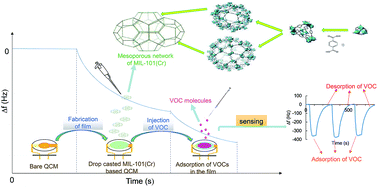
RSC Adv., 2019,9, 24460-24470
https://doi.org/10.1039/C9RA04152D
Heterogeneous ZIF-L membranes with improved hydrophilicity and anti-bacterial adhesion for potential application in water treatment
Heterogeneous Zn/Co-ZIF-L membranes were prepared through the successive growth of Zn-ZIF-L and Co-ZIF-L on the macroporous ceramic supports, and the obtained heterogeneous membranes showed improved hydrophilicity and anti-bacterial adhesion.

RSC Adv., 2019,9, 1591-1601
https://doi.org/10.1039/C8RA08758J
Rhodamine B degradation by nanosized zeolitic imidazolate framework-8 (ZIF-8)
ZIF-8 nanocrystals have exhibited different mechanisms for rhodamine B degradation in water under various circumstances.

RSC Adv., 2018,8, 26987-26997
https://doi.org/10.1039/C8RA03459A
Enhanced electrochemical properties of cerium metal–organic framework based composite electrodes for high-performance supercapacitor application
The presence of oxygen functional groups in GO enhances the charge storage behavior of Ce-MOF/GO composites for use as supercapacitor electrode materials.

RSC Adv., 2018,8, 3462-3469
https://doi.org/10.1039/C7RA12789H
Enhanced adsorptive removal of anionic and cationic dyes from single or mixed dye solutions using MOF PCN-222
MOF PCN-222 exhibits excellent adsorption/removal capacities for numerous anionic and cationic dyes individually and together in solutions.

RSC Adv., 2017,7, 16273-16281
https://doi.org/10.1039/C7RA01647F
Iron-based metal organic framework, MIL-88A, as a heterogeneous persulfate catalyst for decolorization of Rhodamine B in water
While Metal Organic Frameworks (MOFs) have been extensively investigated as photocatalysts to eliminate toxic pollutants in water, studies using MOFs as chemical oxidative catalysts to degrade contaminants are still limited.

RSC Adv., 2015,5, 32520-32530
https://doi.org/10.1039/C5RA01447F
Advancement of sorption-based heat transformation by a metal coating of highly-stable, hydrophilic aluminium fumarate MOF
A 300 μm thick, polycrystalline, thermally well coupled coating of microporous aluminium fumarate was deposited on a metal substrate and found to be stable for at least 4500 ad-/desorption cycles with water vapour.
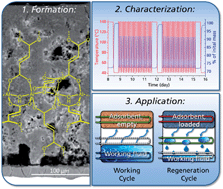
RSC Adv., 2014,4, 24073-24082
https://doi.org/10.1039/C4RA03794D
Optimization of continuous phase in amino-functionalized metal–organic framework (MIL-53) based co-polyimide mixed matrix membranes for CO2/CH4 separation
This study demonstrates an optimized approach to enhance pure and blend CO2 and CH4 permeation through amine-MIL-53 based 6FDA-ODA-DAM mixed matrix membranes (MMMs) upon cross-linking polymer modification.
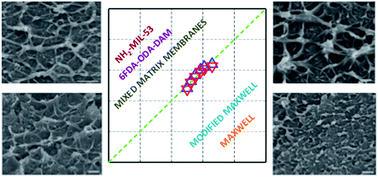
RSC Adv., 2013,3, 24266-24279
https://doi.org/10.1039/C3RA43486A
Cu(II)-and Co(II)-containing metal–organic frameworks (MOFs) as catalysts for cyclohexene oxidation with oxygen under solvent -free conditions
[Cu2(OH)(BTC)(H2O)]n·2nH2O (Cu-MOF) and [Co2(DOBDC)(H2O)2]·8H2O (Co-MOF) can catalyze the oxidation of cyclohexene with O2 to give 2-cyclohexen-1-ol and 2-cyclohexen-1-one under mild and solvent-free conditions.
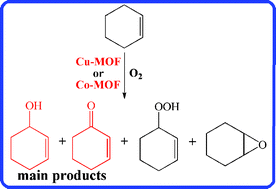
RSC Adv., 2012,2, 3309-3314
https://doi.org/10.1039/C2RA01038K
About this collection
We are very pleased to present our 10th Anniversary collection on m etal-organic frameworks and their applications !
Looking back over the last 10 years, we would like to showcase some of the very best articles that have been published in RSC Advances. Many of these papers have been cited hundreds of times, providing valuable advances for further research, and some continue to be among the journal’s most downloaded articles as of today.
We hope you enjoy our 10th Anniversary collection on metal-organic frameworks and their applications.